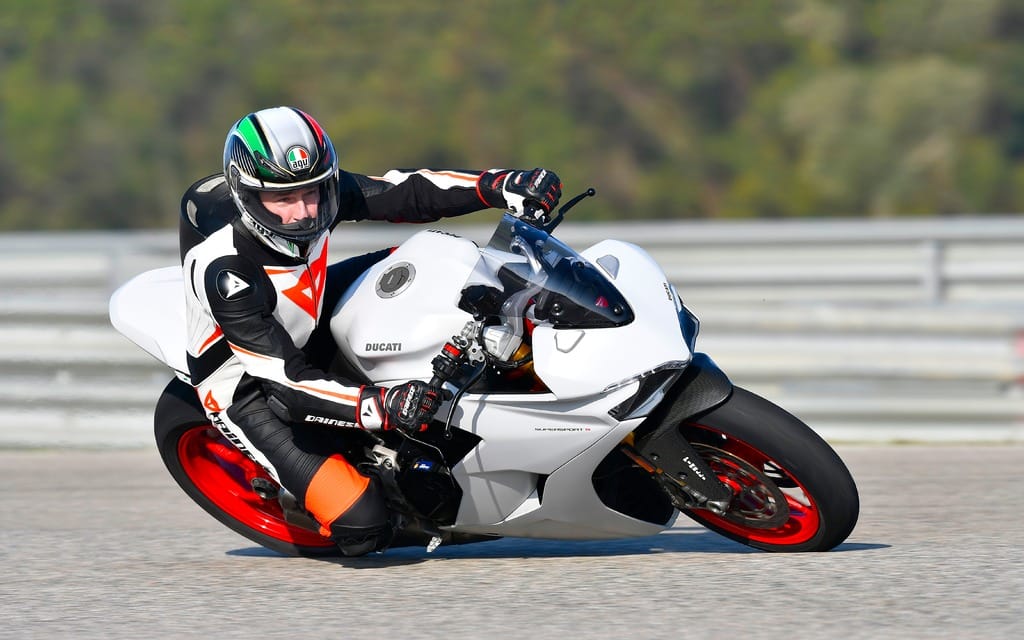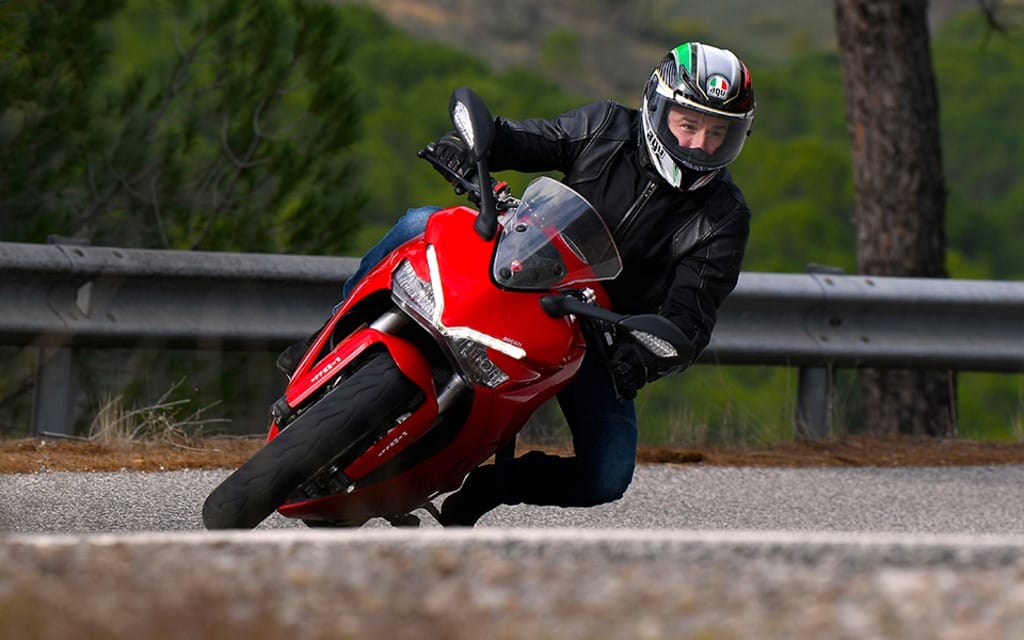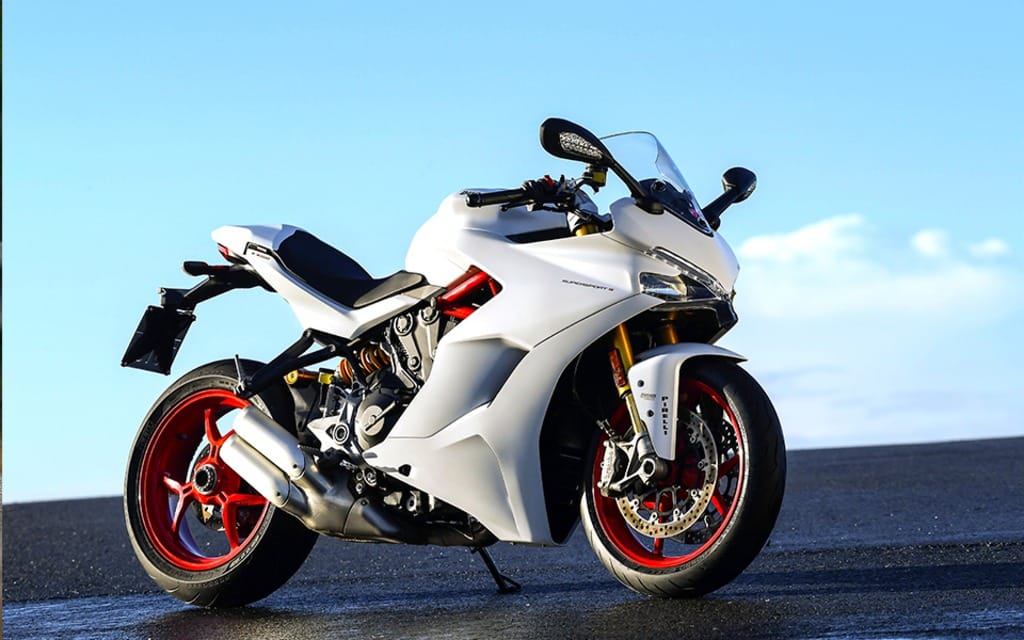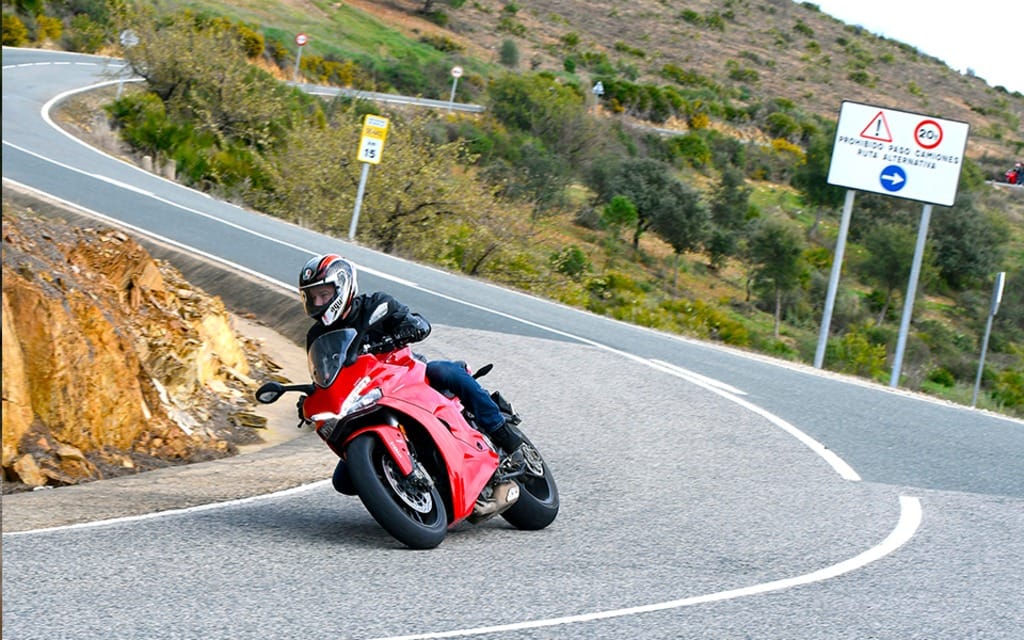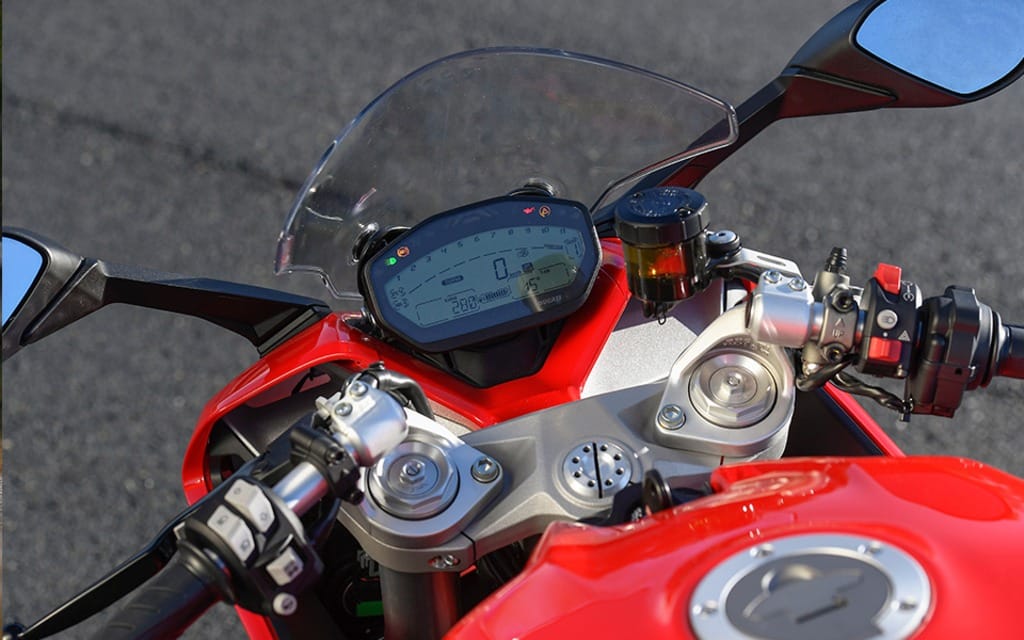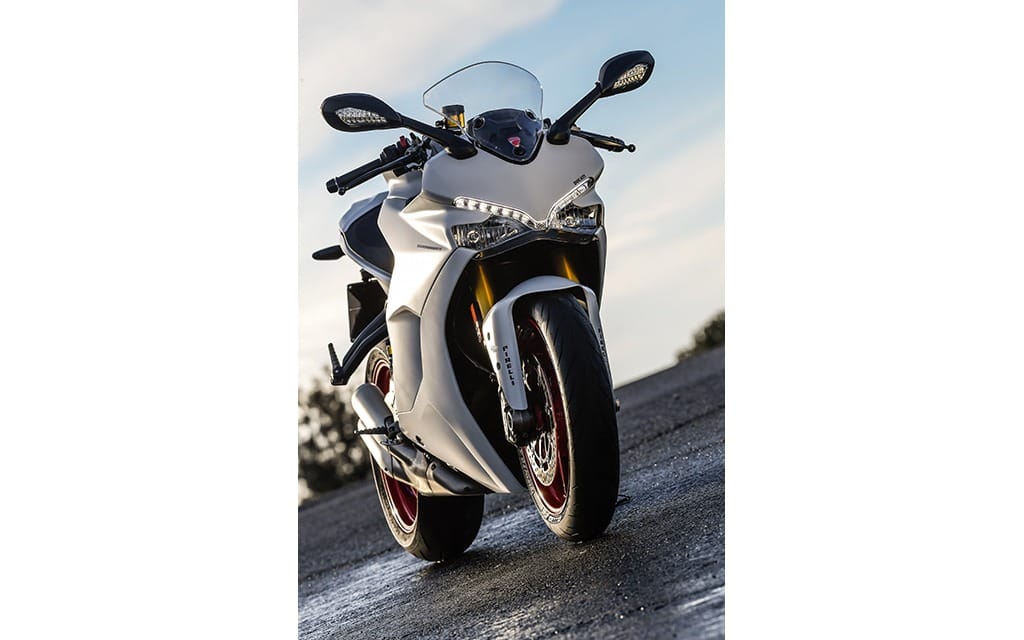New SuperSport is heritage in name only
By Guy Caron
The new Ducati SuperSport revives a name that has long been associated with the race bikes of the brand. Until the 851 superbike broke cover in 1988, the Supersport was Ducati’s flagship. Based on Paul Smart’s Imola-winning steed, no compromises were made for creature comfort when the first iteration was released in 1973.
The 2017 SuperSport brings back the name but does not have the same mission; racetrack honours are to be defended by the Panigale. The SuperSport is a road-going sport bike that can handle everyday riding in style and comfort while keeping the sharp and precise handling traits that are so rewarding. Commuting, back-road strafing, light touring and the occasional track day are on the SuperSport screen, all at a reasonable price that Ducati hopes will bring a wider audience to the stable. It is a beautiful machine that has the look but not the pain of a hypersport bike and could be a good all-rounder. It’s priced within reach and looks good on paper.
The Testastretta 11-degree 937 cc L-twin motor is sourced from the Hypermotard line. Massaged to deliver a flatter torque curve, it is rated at 113 hp at 9,000 rpm and 96.7 Nm (71 lb-ft) of torque at 6,500 rpm, with 80 percent of that power available from 3,000 rpm to redline. The ride-by-wire technology offers three ride modes: Urban, soft delivery with power limited to 75 hp; Touring, full power with progressive throttle response; and Sport, which gives the most direct and sharp connection. The ABS and eight-level Ducati Traction Control (DTC) are pre-set in each mode but can be altered to your liking. Once adjusted, through the dash and left switchgear, the chosen settings will stay in the memory of the modes, even when switching those or after a stop—a good thing as it saves the navigation through the menu every time you get going.
The short steel-trellis frame connects to the cylinder heads; the engine is a fully stressed member. The single-sided swingarm pivots off the back of the transmission. The linkage-less shock and the rear subframe are attached directly to the rear cylinder head. Brembo hardware takes care of braking. A radial master cylinder pushes fluid to the M4-32 calipers that squeeze 320 mm discs up front. A 245 mm disc and a two-piston caliper slow the rear wheel. The Bosch 9MP ABS is standard and offers three levels of intervention. The base model SuperSport is suspended by a fully adjustable 41 mm Marzocchi inverted fork and a Sachs shock with preload and rebound adjustability. The SuperSport S is graced with fully adjustable Öhlins units front and rear, with a bigger 48 mm fork. The other extras on the S model are the quickshifter that works on upshifts and downshifts and a solo seat cowl. Those two features are available as options on the base SuperSport but if you want the white pearl finish with red wheels, you’ll have to go with the SuperSport S.
The lines of the SuperSport relate directly to the Panigale. The headlight with the LED daytime running lights and the upper fairing attest to the lineage. There are no visible screws on the exterior and the finish level is what you’d expect on a Ducati. A panel in the colour of the body surrounds the dash and the sides of the fairing connect to the fuel tank. The windscreen is adjustable by hand, offering a 50 mm higher position for some more protection. The one-piece seat is sculpted with a generous front portion that is narrow at the front and widens when you move back while the passenger perch looks decent. A small storage compartment with a USB port is located under the seat where the tool kit also resides. The tailpiece is svelte. Combined with the two short silencers on the right side and the single-sided swingarm, the rear displays a light, sporty appearance to match the front end. The raised clip-ons are a short reach over the 16-litre tank. With the relatively low footpegs, the position feels relaxed and natural. There are many accessories and packs available, the most interesting to me being the touring pack with a pair of 22-litre semi-rigid side bags, a taller screen, and heated grips.
Our day will be divided between riding the base SuperSport on the road in the Rio Tinto valley near Seville and two sessions around the Monteblanco circuit on the SuperSport S. The mild Iberian winter brings cooler mornings so I was happy to start my day on track; the sun would raise the temperature to a more pleasant 20 degrees in the afternoon for the street ride.
With one quick lap to see the 18-corner, 4.4-kilometre track that varies from tight hairpin turns to a few high-speed, flat-out curves, I’m let loose on the SuperSport S ($15,995 in red, $16,295 in white). Right from the get-go it gives me confidence; stable yet quick to turn in, easy to adjust the trajectory in midcorner when I misjudge where I am on the circuit, and the ground clearance is surprisingly good. The fuelling is precise and clean, making it easy to exploit the linear power that surprises me in an unexpected way; no wild burst of torque here, just a deceptively potent thrust forward that does not feel all that fast—though I reach the braking point for the second gear, 180-degree turn at the end of the 960-metre front straight with 240 km/h showing on the dash. The Brembo brakes are up to the task and the SuperSport S is perfectly stable and reassuring when pulling hard on the lever. The initial bite may seem a bit tame if you just got off a Panigale but a slightly harder squeeze is rewarded by good feel and plentiful deceleration. It’s a good balance of attributes; seasoned track riders and not-so-experienced beginners will both be pleased. Even with the high bar the protection behind the screen is decent, more so in the higher position.
Going through the gears with the Ducati Quick Shift is rewarding and smooth, taking a load off my sleep-deprived brain. As long as the digital tach is below 9,000 rpm, downshifting by just pushing down on the lever is a breeze.
For my second session I play with the ABS and DTC settings, going from the preset level 2 on the ABS to level 1 and from level 3 on TDC to level 2. The intervention was not too intrusive on the previous run but with the more liberal settings I can extract more from the 180-section rear Pirelli Diablo Rosso III driving out of corners. The stock tires did impress on track by the very good traction level and even more by the feedback at, or past, the limit. My braking markers are pushed a few metres deeper, with no pulsing at the lever, all good. In discussion with colleagues fresh off the track, we came to the conclusion that the SuperSport S pleased all in our two groups. I must note that the range of riders varied from former and current AMA pro racers in my group to two journalists getting their first taste of a racetrack in the second slower group. Quite impressive that one street bike could have all smiling.
With a slow and tortuous route through villages and a little town, I could get an appreciation of the base SuperSport ($14,495) in a totally different environment to start the road portion of our test. The easy-on-the-wrist riding position, decent legroom, comfortable seat, smooth fuelling and throttle response in Touring mode and the compliant suspension combined with the relatively compact size and weight (210 kg wet) of the Ducati proved quite pleasant at lower speeds. The L-twin could be lugged down to 2,000 rpm in second gear and would not protest when I accelerated—as long as I rolled on gradually; otherwise I’d get the shuddering that long-time Ducatisti are used to. It is smooth and easily accessible but does not let you forget its origin—call it character. When the road opens up and our guide turns his attention to the stretch he knows very well, we enter the SuperSport-ideal playing grounds. The standard Marzocchi fork and Sachs shock give a reassuring ride here; firm and plenty stable without being harsh. The good manners I enjoyed on track are even more comforting on the street; the SuperSport strong point is its sweet handling. I could play with the gears; the transmission without the quickshifter is smooth and precise, but shifting is not needed. I can select fourth or fifth gear and just roll on and off the throttle from one corner to the next, keeping the revs in the 3,500 to 8,500 rpm range. There is more urgency past the 4,500 rpm mark but no adrenaline-inducing rush anywhere, just a more muscular pull that gets me from one corner to the other swiftly. There is a little vibration past 5,000 rpm (or maybe I should say it is not as smooth), but not much to complain about. The mirrors are well-placed but quite small, the seat still felt good after the three-hour ride and wind protection is decent.
What you have here is a SuperSport that delivers pretty much what Ducati designed it for, a sexy, sporty machine that can dance and sing but that also pampers its rider, at a price that is within reach of more customers. The first Supersport of the ’70and ’80s was a great machine but it was very hot, way hot. The new SuperSport is warm enough but won’t burn you.
